Moose
The moose is the largest member of the deer family; indeed, it is the largest local animal of any kind. In the winter a moose will eat twigs, buds and bark, while in the summer it moves on to aquatic vegetation and so is most likely to be seen around creeks and marshes.
Some of the pictures, below, show moose in marshy wallows and some swimming across Kootenay Lake. A moose swims strongly, and can do so continuously for several hours—much longer than it takes to cross the West Arm.
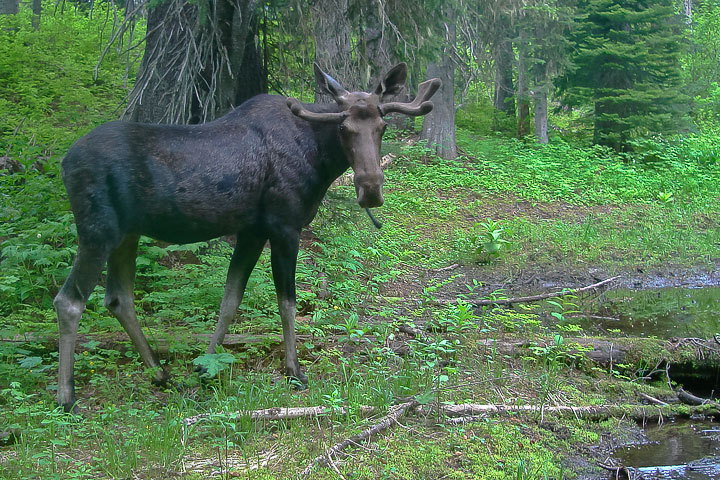 It is July, and this bull moose is wandering the Selkirk Mountains south of the West Arm. Its growing antlers are still in velvet.
It is July, and this bull moose is wandering the Selkirk Mountains south of the West Arm. Its growing antlers are still in velvet.
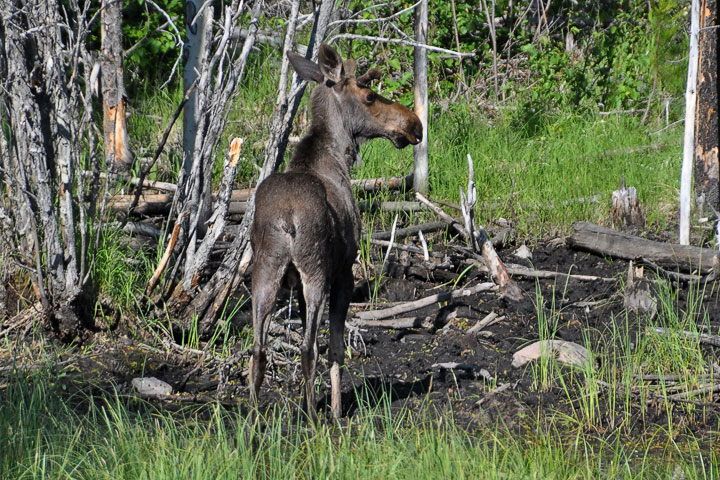 A young moose urinates before wandering deeper into the woods.
A young moose urinates before wandering deeper into the woods.
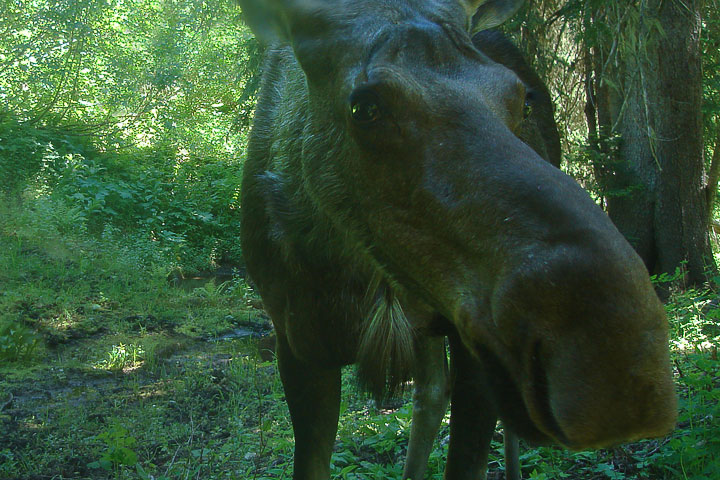 Unlike other members of the deer family, the moose’s nose is large and overhangs its mouth. The nose contains muscles and tissue that close it when the moose forages underwater.
Unlike other members of the deer family, the moose’s nose is large and overhangs its mouth. The nose contains muscles and tissue that close it when the moose forages underwater.
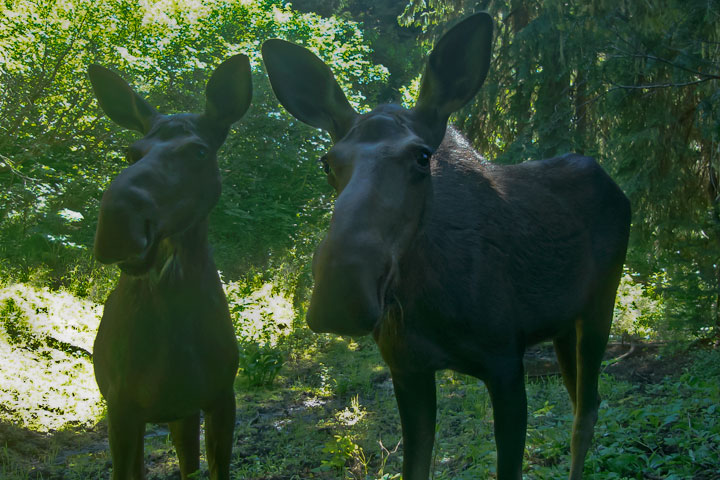 From the family album:
From the family album:
— mommy and me —
 A moose is quite willing to swim across a fairly large body of water to reach the other side. I have seen moose swim across the West Arm a couple of times. This one started from the south shore and swam across to Kokanee Creek Provincial Park. It is mid June, and this male has a good start on its antler growth.
A moose is quite willing to swim across a fairly large body of water to reach the other side. I have seen moose swim across the West Arm a couple of times. This one started from the south shore and swam across to Kokanee Creek Provincial Park. It is mid June, and this male has a good start on its antler growth.
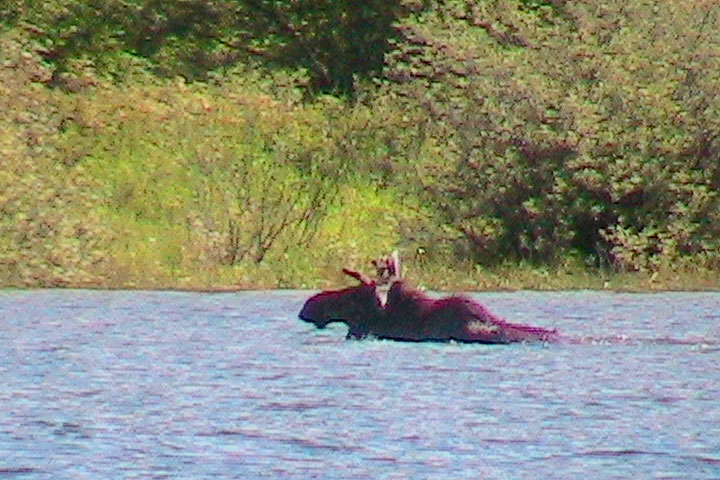 As the moose reaches shallow water it can begin walking.
As the moose reaches shallow water it can begin walking.
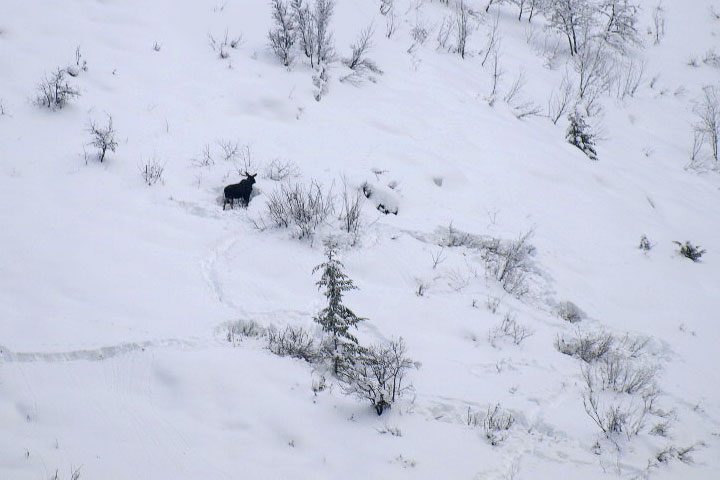 A moose is digging pits in the January snows to get at the woody brush. Several rather large pits dot the hillside with tracks between them.
A moose is digging pits in the January snows to get at the woody brush. Several rather large pits dot the hillside with tracks between them.  Doug Thorburn
Doug Thorburn
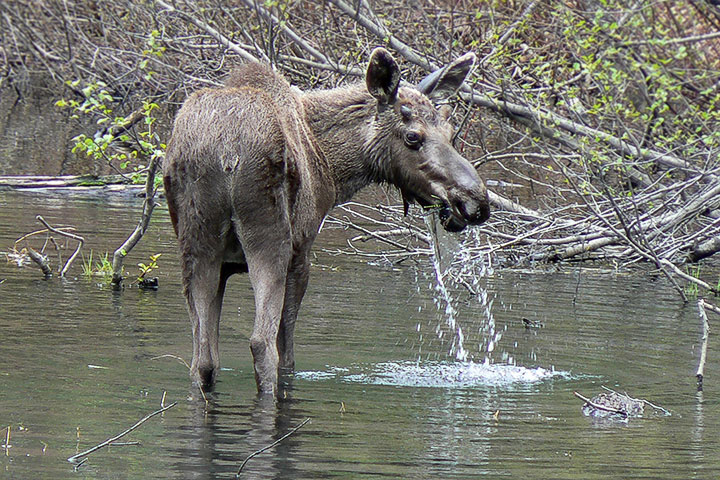 A yearling moose is feeding in the shallows.
A yearling moose is feeding in the shallows.  Lorna Surina
Lorna Surina
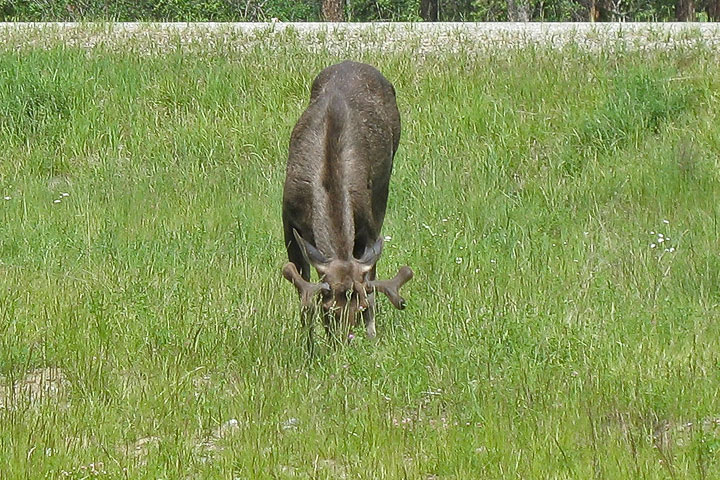 A moose is feeding in a field beside a road.
A moose is feeding in a field beside a road.
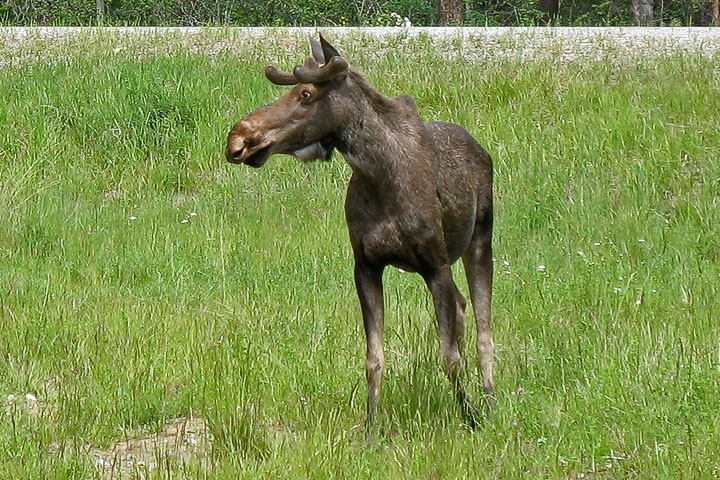 It turns.
It turns.
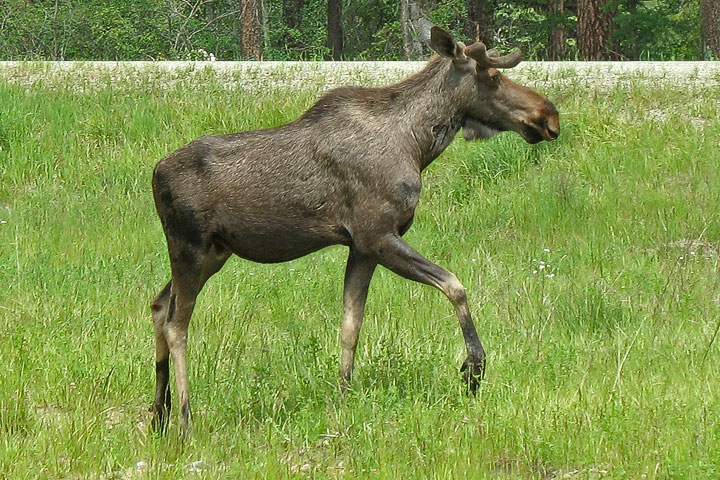 The moose leaves. Its mid–June antlers are still small and in velvet.
The moose leaves. Its mid–June antlers are still small and in velvet.
Information from BC Ministry of the Environment: Moose in BC.
![]()